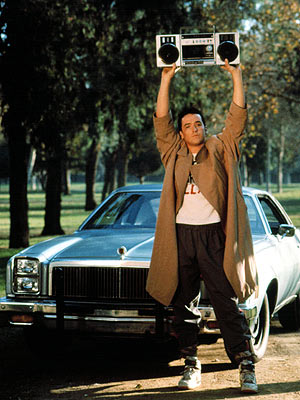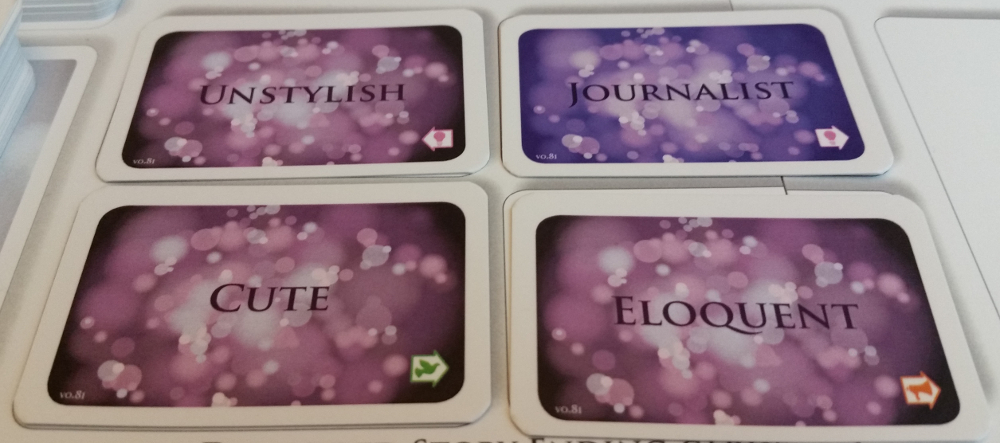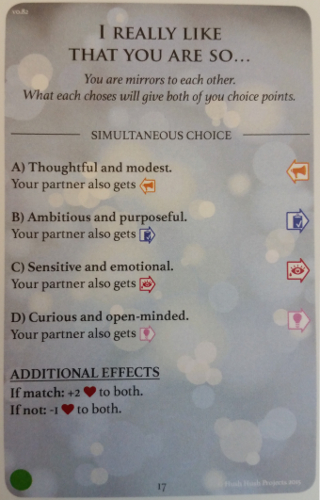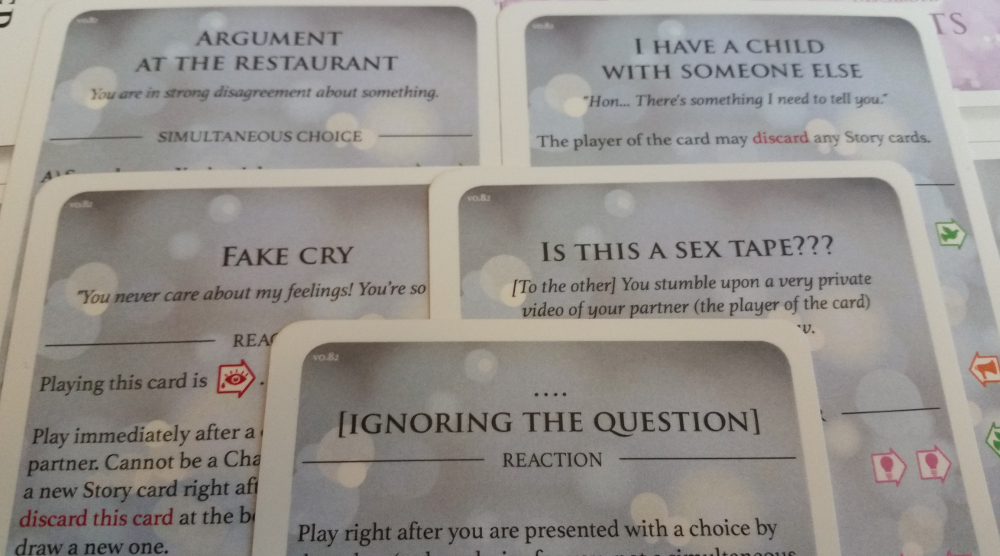Come in Juno, and let me tell you a story a heartwarming tale. It’s about Harry, An American President, and His Girl Friday. Harry had High Fidelity as a politician, and though some claimed he’d Say Anything for a vote, he genuinely cared for his constituents. But, alas his love life had been a series of shambles after his wife’s untimely passing. From his days of Chasing Amy Waters and wooing Annie Hall, he saw no shortage of high-profile failures. Yet When Harry Met Sally Friday, everything changed. She was Pretty in Pink at events, her charm was As Good As It Gets, and her personality made her an all-around Pretty Woman. Their courtship was so true and so passionate over a short 500 Days of Summer that the people nicknamed her The Princess Bride. At the end of it all, they were married and lived happily ever after.
What was it all for? Are you still so Clueless? Why it’s all about Love, Actually.
As it happens, love is also what brings us here today. Few games dive into the realm of passion, romance, and the intricacies of relationships. Fewer still succeed at providing a meaningful or substantive gaming experience. There’s no reason to despair, though, for that’s what you’re getting in Fog of Love, the inaugural game by designer Jacob Jaskov. In this two-player game of relationship shakeups and makeups, you and another wind through the course of a couple’s romantic time together, from the moonstruck early days through many of life’s difficult challenges and unpredictable events. Will your love survive through it all? Will you be the same person at the end of the story as you were at the beginning? There’s only one way to find out.

Above 30: Classic moment in rom-com movie history.
Under 30: What’s he holding?
The intent with Fog of Love is for two players to act out the evolution of their characters’ time together as if it were a romantic comedy. Yes, romantic comedies, that movie genre you outwardly mock but still secretly enjoy a couple of here and there.
You know you do.
To accomplish this you must set the stage. First, you and your Other must decide which scenario your couple will play out over the game’s three acts, represented by a set of Chapter cards. Each of these scenarios is different, providing more or less drama and relationship tension as you desire. Whether it’s a case of high school sweethearts or a cautionary tale of love at first sight, every story provides the framework for the course of your relationship.
Then you build your characters. This process is a key aspect to Fog of Love’s inherent value and part of what makes it so successful as a thematic vehicle. While the game doesn’t force you to roleplay per se, it definitely encourages you to at least make decisions in the shoes of your fictional alter ego. Not only does it make for a better gaming experience, but doing so maintains the game’s intended lightheartedness.
At the very least, come up with a name for your personae. It’ll be more fun should things veer off into Jerry Springer territory.
Characters are created by using different sets of cards representing your Features, Traits, and an Occupation. Each player takes turns bestowing three unique Features to the other player, which helps define that person’s identity – and presumably what it is you saw in them to begin with. Players select an Occupation for themselves as well. Both players then choose three Traits for their character to personify. However, the Traits that your character embodies are kept secret, at least at first. You can’t know everything about the other person yet. Otherwise dating would be way easier.
Fog of Love is also largely gender neutral and isn’t beholden to just heterosexual couples, which is a nice nod to letting players decide for themselves what type of relationships they want to forge. With the exception of a few Story cards that may or may not be applicable (i.e. surprise babies), whether you choose to play as a man or a woman doesn’t really matter. Your character is still going to get their share of laughable moments and contentious arguments.
You know, like an actual relationship.
Moreover, every Feature, Trait, and Occupation card has mechanical implications. These go to the heart of Fog of Love’s gameplay. Within the game lies six personality trackers, each containing positive and negative paths. Every Feature and Occupation card starts you off with one marker in their indicated columns. Traits, by contrast, act as personal goals; each Trait wants you to individually (or collectively with your Other) have a net number of markers along a specific personality track. Succeeding at your Trait goals nets you Satisfaction points at the end of the game. Failing at them costs you points. Goals like these:
Once these are in place, you are ready to fall in love. Of course, whether or not you stay there remains to be seen.
The game begins with both players receiving two sets of cards. The first are matching sets of Story Ending cards. These are your potential Happy Ever After options – thematic victory conditions on how your particular Fog of Love story will conclude. Kept secret, these cards will fluctuate and dwindle throughout the game until one path reveals itself to you. You don’t necessarily have to have the same victory conditions as your Other – but it definitely helps your odds. Fog of Love is ideally a co-op, so both players should want to work to strengthen their relationship bonds and walk away winners. But just as this game imitates most other aspects of the romantic entanglement, breakups can and do happen too, which can lead to only one player – or no one – winning.
Of course, such things are hard to predict at the onset. Hence the name of the game.
Yet even with all of this nuance taken into account, Fog of Love is still remarkably simple to play. This is thanks to the game’s Story cards. Story cards depict various events, incidents, and moments throughout the course of your time together, from sweet and silly flirtations up through cheating scandals and shocking revelations. You begin with a handful of Story cards to start off the intrigue, and the process is very open-ended. There is no set path or propriety over which Story cards to play. Rather, it’s simply your choice over how you’d like to see the story unfold.
After the First Chapter card is resolved, players take alternating turns playing and resolving Story cards, drawing replacements. Story Cards come in several varieties, but the majority present a multiple-choice narrative scenario for your Other to answer or for both of you to answer simultaneously. Depending on the responses given, the card will reward you with one or more personality markers, as well as adding to (or reducing) your Satisfaction points.
Once the depicted number of Story cards for a Chapter are done, the process is repeated twice more, with Story cards increasing in severity of tone and topic. After that, the finale is drawn, and players determine via their Story Ending cards if you are indeed soul mates or just star-crossed lovers.
This stapling effect of a mechanical reward to a thematic situation in Fog of Love is the one area players have to be careful about, however. There’s nothing stopping you from simply choosing whichever Story answer will net you the most advantageous reward, and it’s this aspect that’ll determine whether it’s your type of game or not. You can certainly play Fog of Love in an optimal reward-seeking way, but doing so will probably leave you unfulfilled in the end. So much of the game’s intrinsic value is derived from its flavorful decision-making Story cards, and adhering to that mindset yields the best experience. This applies to both individual playthoughs as well as overall replayability. If thematics and / or roleplaying don’t interest you, then it’s probably best to see other games.
Indeed, at its best, Fog of Love is one part game, one part immersive journey. While it presents a number of choices that can be chosen on a purely rote and mechanical level to advance your chances at winning, doing so misses the bigger picture. This is a game that wants to tell a story, ushering both players through a self-tailored cinematic of love, romance, and the hardships one endures to maintain those things. Fog of Love vividly captures that sense of character evolution throughout the game while still maintaining a generally genial tone, all of which culminates in the building of tension towards a classic ‘Will They Or Won’t They’ movie moment.
Is it a bit cheesy? Sure. But so is love. So it’s in good company.
What’s more, Fog Of Love does something few games succeed at: creating a truly holistic game about love and romance. It successfully marries grounded gaming architecture with lofty narrative flavor, and it’s one pairing that just works. It’s different, it’s memorable, and it lets you decide how invested you want to get. Plus, it accomplishes all this without feeling like it was ripped from a magazine quiz page.
Mostly.
If this sounds intriguing to you, and you think you have what it takes to navigate the highs and lows of a new relationship, then consider doing some speed dating over on the game’s Kickstarter before the timer runs out! Love may be timeless, but this campaign is not.
[sc:Preview-Sealer ]
Photo Credits: Fog of Love cover and artwork by Fog of Love; Say Anything by 20th Century Fox.




